When "Evil" Eddie Richards Invited Me To His House
An honour to spend quality time with a British pioneer
Back in 2016, I invested some spare cash into launching my own editorial platform - Don’t Lose The Magic. The idea was primarily to create a space free from the limits of time constraints and promo cycles. I called an “online periodical” and, rather than publish the content on a daily or weekly basis, everything would be released every few months as a digital issue. As time went on, each issue of DLTM had a theme, with all the reviews, features etc, centred around that one theme. One of my journalistic dreams was to be able to spend extended periods with the subjects of my writing - not just a scheduled hour or so, but good quality time, across a long period of time. The battle against promo cycles is incessant and frustrating, as many journalists will attest, and the way in which media coverage is often governed by releases, festival appearances and new projects really limits possibilities for interesting features. Thankfully, I managed to find people who were willing to simply hang out with me and allow me to bring that simple dream to life.
One such person was Eddie Richards. We met when he was on a panel discussion I hosted at Brighton Music Conference back in 2015. I kept in touch with him and, when DLTM started to come to fruition, asked if he was up for doing something with me. Not only did he agree, but he went above and beyond, meeting up with me three times over the course of a few months, with our final meeting taking place at his home in Milton Keynes. He’d never invited a journalist to his house, so it was a huge honour to be welcome into his personal space. Exactly the kind of journalistic endeavour I’ve always wanted to dive into. Sadly, Don’t Lose The Magic was infiltrated by hackers in 2017, and my webmaster was unable to unpick all the damage they did, so it’s been down ever since. I already reposted an amazing chat I had with Danny Daze back in November 2021, and now here’s that Eddie Richards piece, along with a mix, that he pieced together meticulously, featuring some of the big songs/tracks from his groundbreaking time at Camden Palace. Enjoy!
Eddie Richards is often referred to as one of the Godfathers of house music in the UK. Not that he’d ever accept that title, he’s way too modest for that. He’s a music lover, pure and simple. He loves listening to music, collecting it and sharing it with people – these are what we might consider to be the defining qualities of any DJ worth his salt. Ego has no part to play in the character of most of the very best DJs and certainly he seems to be one those artists who places music way above his own importance.
Over the course of a month or so DLTM spent some time with Eddie, chatting about his life in music; the past, the present and the future. We spent two separate occasions in a pub in Soho, and also went up to Milton Keynes and visited the home he has occupied for the past three decades, hung out in his studio and got to know the man they call ‘Evil’ Eddie Richards… and he’s put together an extra special mix, featuring some of the music that he was playing in the early days of the groundbreaking Camden Palace. A task that took him six weeks, as he painstakingly assembled tracks that are very difficult to mix manually. Check it out below…
Eddie Richards began DJing while he was at school. He and a friend built their own mobile disco from chipboard, covered in orange Fablon. They soldered the mixer from a kit and used the now infamous Garrard SP25 turntables to play their records. Together they managed to get bookings at local weddings and social club events playing pop music, but it was a pub in Milton Keynes called The Starting Gate where Eddie’s career as a DJ really kicked off. His appearances at the venue came at an interesting time for the New Town. An influx of new inhabitants from surrounding areas, and London, meant that musical tastes, fashion and youth culture diversified. Between 1971 and 1981 the population of Milton Keynes almost doubled from 66,949 to 123,289 bringing with it a much wider demographic of people – this fed directly into Eddie’s experience as a DJ. The ‘biker’ pub was frequented by an assorted cast of music lovers, whose tastes introduced Eddie to a whole new world of music. During our visit to Eddie’s home, he takes us out to the very spot where The Starting Gate once stood. He can’t seem to remember the address before we leave his studio, and some internet searching proves fruitless. We head out regardless and Eddie navigates his way there without a hitch, the memory of his route there indelibly etched into his subconscious.
On the corner of what’s now a food and retail park, next to a Chinese restaurant, is the empty space that once housed The Starting Gate. Pretty nondescript and a little bleak, but part of the UK’s dance music heritage. Sitting in the French House pub on Dean Street in Soho (a stone’s throw from some of the most seminal record shops of years gone by), Eddie tells us about those early days. “I started a night at the Starting Gate pub where, as well as older biker guys, we had a really young crowd of goths, new romantic types and gays.. basically people who weren’t welcomed in other places. Some of them would bring in new music they had bought and I was up for trying out anything. Some of it was great and I was curious about where it was being played. A couple of the gay crowd said I should go to visit Heaven,” Eddie explains.
In the aptly-named London club he met the late Colin Faver. Colin’s generosity led to a friendship that was to take Eddie from the relatively understated position of disc jockey at a Milton Keynes pub, to becoming one of the regulars at what many accept as being one of London’s best ever club spaces – the Camden Palace – a venue that has played a crucial role in the development of house music and rave culture here in the UK. The Camden Palace was one of the first American Style clubs in the UK and probably the first UK ‘super club’. It was also one of the first straight clubs where one could hear music mixed nonstop, all night long. Eddie tells us, “This was actually a big deal in 82 because mixing wasn’t going on much at all in the discos and a lot of the known DJs at the time were against it or didn’t believe it would catch on.”
As the conversation moves on, we chat about Colin Faver, who died in September 2015 at the age of 63. “I think he saw something in me, and so he decided to be a friend and help me out. He took me to the Sound Shaft, let me go through some of his records and told me where I could buy them; Groove Records in Wardour Street, or Record Shack in Berwick Street. I invited him to do our night in Milton Keynes and he agreed”, Eddie laughs as he reminisces about his late friend. “He came up on the train and turned up with a black bin liner over his shoulder, full of records. I remember him walking out of the station with his spiky hair. That’s what I’ll always remember about him; his grin and his spiky hair. A few months later he called me up to ask if I wanted to be a resident at a new club that was opening, the Camden Palace…”
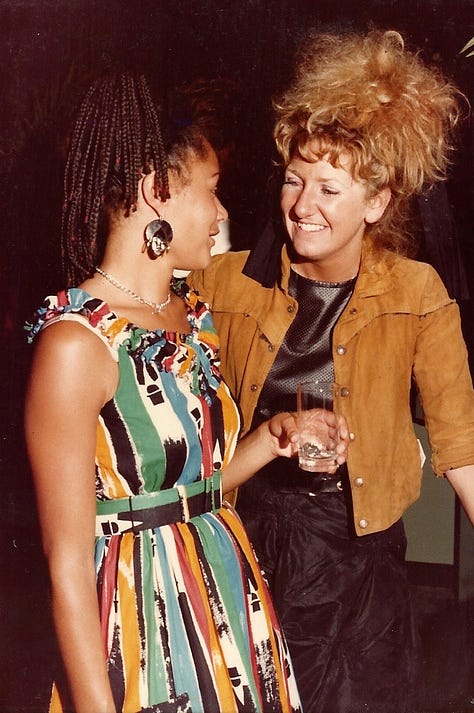







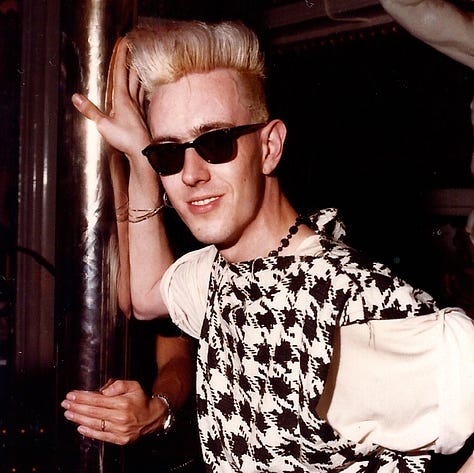
At the fabled club Eddie honed his craft, playing at least twice a week to a colourful, eclectic crowd of young people hungry for new music. The set up was impressive, even for the time, and the Camden Palace became one of the hottest tickets in town. “They had three Technics turntables, a custom made mixer, a Tascam double cassette recorder and player plus an Eventide Spring Reverb and this was 1982. They had a reel-to-reel tape machine like many of the best clubs in New York,” Eddie explains. “Camden Palace was actually modeled on New York clubs like Paradise Garage and Zanzibar with the focus on high quality sound. When a producer had finished a track and wanted to test it out before getting it cut, he would bring in a reel to play in the club,” he cheerfully recalls. During this period he implemented a process whereby he recorded each of DJ sets at the club on cassette tape, listened back to it at home, gave each transition during the mix a score out of 10, then tallied up those scores and marked each mix with an overall total. He would then attempt to better his score every week in a conscious, and diligent, attempt to become a better DJ.
“I was really determined to improve my mixing skills and it was much harder to mix at that time… there weren’t many records made with a drum machine and the bpm range of music we were playing went from 90 for say ‘Shout’ by Tears For Fears to over 150bpm for Human League. It was a real challenge to build the night up and bring it back down again,” he explains. “Colin had a lot of respect, because he was such a good selector. People ask me what I think about using vinyl, or CDs, or USBs, to me it doesn’t really matter, it’s all about selection and Colin was a master. He didn’t just play all the punk stuff, which he grew up on, he’d play deep house and a variety of other stuff… he had excellent taste across a wide range of music.”
We invite Eddie to tell us more about the history of the club and describe the general atmosphere at Camden Palace during that era; the fashion, the people – “The Camden Palace followed on from the Blitz which was hugely important and influential at the time. Steve Strange was the host on the door, Rusty Egan was the DJ and Boy George worked in the cloakroom. The Blitz changed youth culture for a generation and spawned bands like Visage, Ultravox, Spandau Ballet, Wham, Culture Club, Blue Rhondo, Sade and Hayzi Fantayzi who, among others, would all come to pose at the Palace,” Eddie explains.
“Some of the famous faces who I saw during my time there include Grace Jones and Madonna, plus we’d have The Eurythmics, The Cure and The Clash all performing. These appearances ended up all over the press because the Camden Palace had a great PR team – the one that ‘Absolutely Fabulous’ was based on, actually. So that attracted more people. There wasn’t really one style of fashion, you went there to pose but it was also about the music. It was the first club I’d known, in the UK, which was built around the soundsystem”.
“When I was at The Starting Gate I was playing stuff like Killing Joke, at the Camden Palace I was still playing things like that but they had the equipment to facilitate mixing and it was a dance club so we’d be playing Human League, Heaven 17, Thompson Twins, stuff using drum machines that you could mix. It was commercial in a way but we’d always get special versions and test pressings that were only made for the clubs. Also, the trend in New York at the time, for 12-inch records was to have a radio mix, a club mix, an instrumental and a dub. We’d create mega mixes using two records and all the mixes they had on them,” he says.
During those early years, he also met a young rascal by the name of Richard West – known as Mr. C – who was actually underage, but managed to get into the club by climbing in through the roof. “He used to come in and ask to rap, Colin used to let him get on the mic and he’d be wearing a bowler hat, really cheeky he was,” Eddie tells us. The relationship between Eddie and Mr.C led to them recording a track together in 1986 called ‘Page 67’, which features Mr. C speaking about meditation and the subconscious mind way before most of us caught on to it. This creative friendship continued throughout the eighties and all the way up until today, Eddie and Richard remain firm friends. At RIP, held under the arches in London Bridge at Clink Street, the two men were regular faces, along with Kid Bachelor, building the foundations of London’s rave scene at the legendary party and many other warehouse events across the capital.
It was Eddie who facilitated the connection between Mr. C and The Shamen, leading to the band’s transition from a guitar-based outfit to a fully fledged dance act who achieved international commercial success with hits such as ‘Ebeneezer Goode’, ‘Love, Sex, Intelligence’, ‘Move Any Mountain’ and ‘Phorever People’ among others. Eddie himself picked up a gold disc for his remix of ‘Ebeneezer Goode’ in 1992, “Richard had seen how ill-informed Radio 1 were about our music and culture after they banned any reference to the word ‘acid’ in November 1988 – thinking it was about the drug, whereas it was actually about the description of the twisted sound of the Roland 303,” Eddie explains. “This happened just as my track ‘Acid Man’ was due to enter the Top 20 and was earmarked for a slot on Top Of The Pops. He called me up excitedly and rapped the lyrics of ‘Ebeneezer Goode’ down the phone. I remember him telling me if ‘Ebeneezer Goode’ was played on Radio 1, and they somehow found out it was about ecstasy, it would get a lot of free publicity. He was right.”
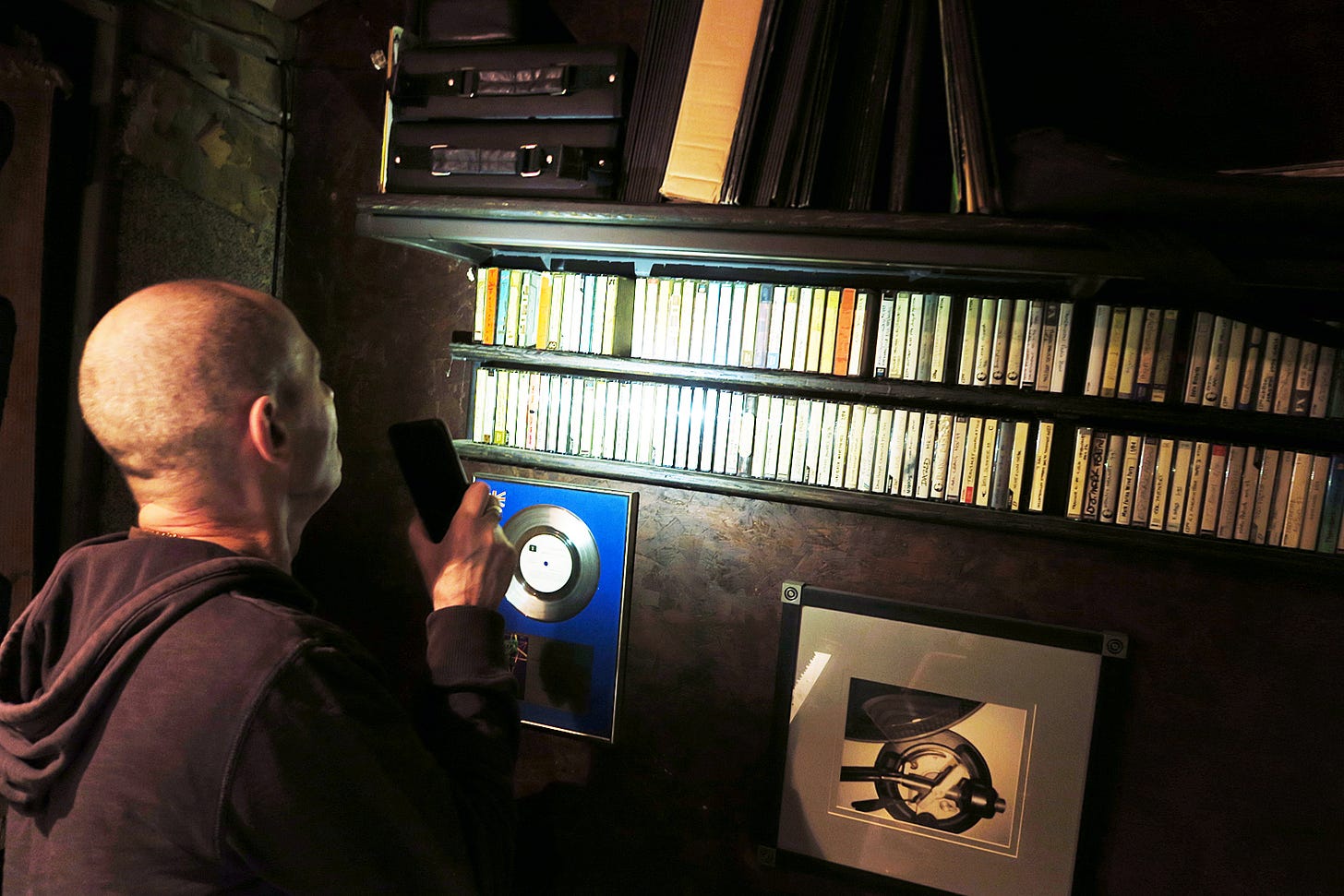
Eddie’s achievements are just one aspect of his life and career, but they are the mark of a man whose love for music has contributed so much to dance music culture; He set up the UK’s first ever DJ agency, called Dy-na-mix. He helped to connect a few of techno’s pioneers for the very first time, when he arranged to meet with Mad Mike Banks and Jeff Mills from Underground Resistance and Richie Hawtin and Daniel Bell from Plus8 (see photo below) to discuss them joining Dy-na-mix. Through Dy-na-mix he had the opportunity to bring over DJs he respected, introducing, then virtually unknown, American producers and artists – like Jeff Mills, Richie Hawtin, Moby, Derrick May and many others – to the UK rave scene.
He’s been a part of Wiggle, one of London’s most seminal club nights – started by the late Nathan Coles and Terry Francis – since its very early days. He was one of the first British DJs to travel across Europe extensively and he was a lynchpin of the early acid house scene, playing at huge M25 raves such as Sunrise and Biology. He was musical director for Sunrise and designed many of their flyers, and several for other big rave organisations of that era. Eddie was also a partner in Outer Limits, a production company and club night that organised one of the first big dance music festivals in the UK, called Helter Skelter, in 1989.
On top of this he was the second UK artist (as Jolly Roger) to get a UK acid track into the national charts (the first was ‘We call it Acid’ by D-Mob two weeks earlier). ‘Acid Man’ entered the UK Singles Chart on the 10th September, 1988 and stayed for 12 weeks. He also made the first UK DJ mix (along with Youth from Killing Joke) called Heavy Duty Breaks in 1984 and, using one of the first ever computer samplers (A Greengate DS3 running on an Apple iie), he performed on stage with Psychic TV using turntables and a sampler.
You may not see his name on the bill at the big festivals and super clubs of this world, but Eddie is still touring, he travels to the States on a regular basis as well as hitting clubs across Europe. “People sometimes ask if I’m still working and I tell them I’ve been DJing every weekend all over the world since the late eighties. It’s not apparent to many people because I’ve never been considered one of the hipster crowd and I choose to play mostly at small underground events,” he tells DLTM. “When I first started I was buying brand new music, when the rave scene kicked off I was buying brand new music and up to this very day, I buy brand new music. I get really bored really quickly, if it doesn’t touch me any longer I won’t play it. I need to keep feeding myself with new music, so I’ve never thought about the past. I’m more bothered about the future. I always get asked to play old school parties. You can never really recreate those times, it’s not just about getting a venue and putting the same DJs in there. It was about the whole feeling of the time, there’s no way you can recreate that. If you do try to do that you just water down what it was and what it meant to people at the time, so I let others do that.”
In his studio he plays DLTM some of the new bits and pieces he’s been working on. Eddie’s aim recently has been to book tours, for between seven and 10 days, so that he can take little breaks in between and get working on music. He’s back on it with making tracks and they’re sounding tight. A few years ago he put out remix packages of his old joints; ‘iMove’ and ‘Dream 2’ were remixed by Radio Slave and Jordan Peak, while ‘Yeyo’ and ‘Aaaiii’ were reworked by Daschund and Kate Simko. Now, he’s prepping some original material, which will be his first since ‘Soul Is Life’ and ‘M’Baby’ in 2014.
Up in Milton Keynes Eddie lives in a humble house with his other half and their cat, Louie. No matter how glamorous his life has been with the razzmatazz of his days at the Camden Palace, life on the road, sweaty warehouse raves and everything in between, not a hint of this comes through in his demeanour or his lifestyle.
During one of our chats I refer to him as one of the Godfathers of UK house and he almost recoils with embarrassment. “I was just there, I don’t really want to make a big deal out of it, I’m not that kind of person anyway, I get embarrassed by all of that. I just like going out and playing music. I don’t really like the way DJs are presented, up in the middle of a stage like a rock band. I don’t do much, I don’t wave my arms in the air and I don’t dance around, there’s nothing much to look at. I’d like to be like Larry Levan up in the DJ booth at the Paradise Garage,” Eddie says passionately. “Because no one knew where the DJ was they didn’t all face in one direction, they were there on the dance floor looking at each other. I don’t think it’s necessary that I’m centre stage with spotlights on me.”
Speaking about his involvement at the birth of rave culture, he simply explains, “I was just there, I was into it because I was into music and I just followed that path all the way through and nothing has really changed for me.” His ethos and drive may not have changed much, but the world around him has and Eddie has adapted without much fuss, moving from vinyl to Serato with control vinyl and onto Traktor in HiD mode. “I thought to myself, ‘What am I into?’. I don’t buy much vinyl anymore and you can’t always find good music on vinyl. I’d be spending ages searching through piles of records to find the one I wanted and it’s just not worth it. It’s much easier in iTunes. Ok, it’s impressive to have 50,000 records in a room but that’s not why I’m DJing.”
Encouraged by DLTM to look back over his career, Eddie speaks about what he gained from the early years of his career, “I don’t know if it’s actually anything conscious. Absorbing that much music constantly is going to do something to you. I find it easier to programme stuff – I can pick something out and it will be in the right key, or it will just work and I think that comes with experience. Being in it for so long rubs off on you.”
Finally, we get on to the subject of his love for music. It’s been a constant force throughout his life, his entire being seems to revolve around it. “Music always seems to have the answer. No matter how I’m feeling, if I’m happy, or sad, whatever mood I’m in I put music on and it gives me the answer. It’s as simple as that really,” he says.
It really is as simple as that. Music Is The Answer…
Please add your comments, or share this post. I love engaging with my readers!

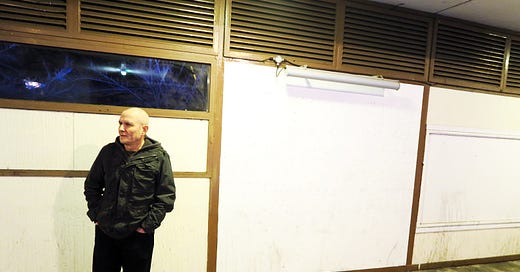

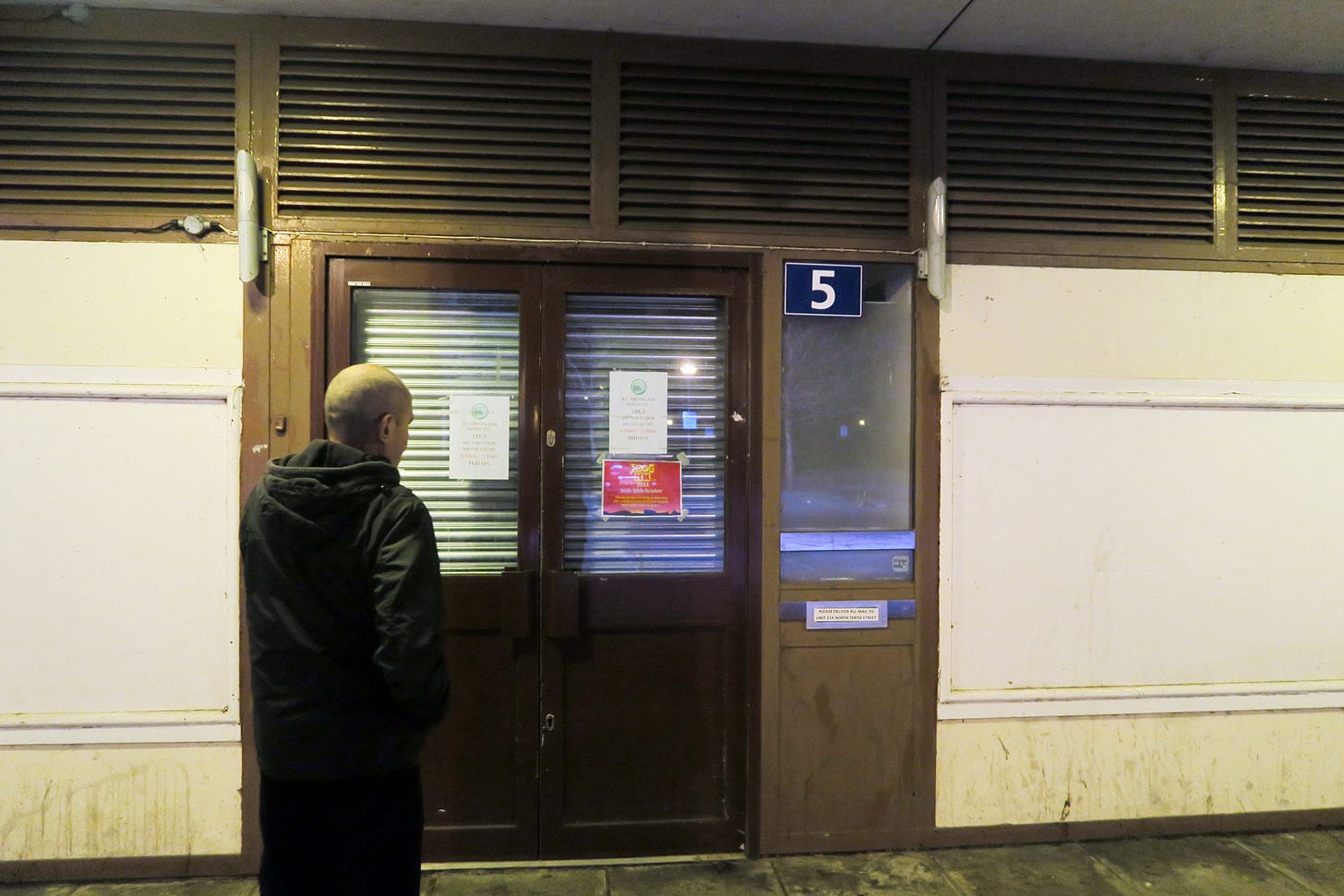
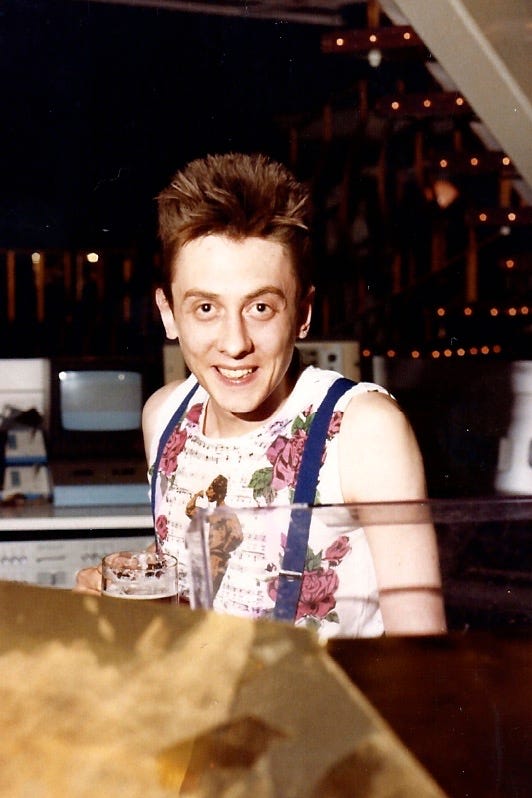
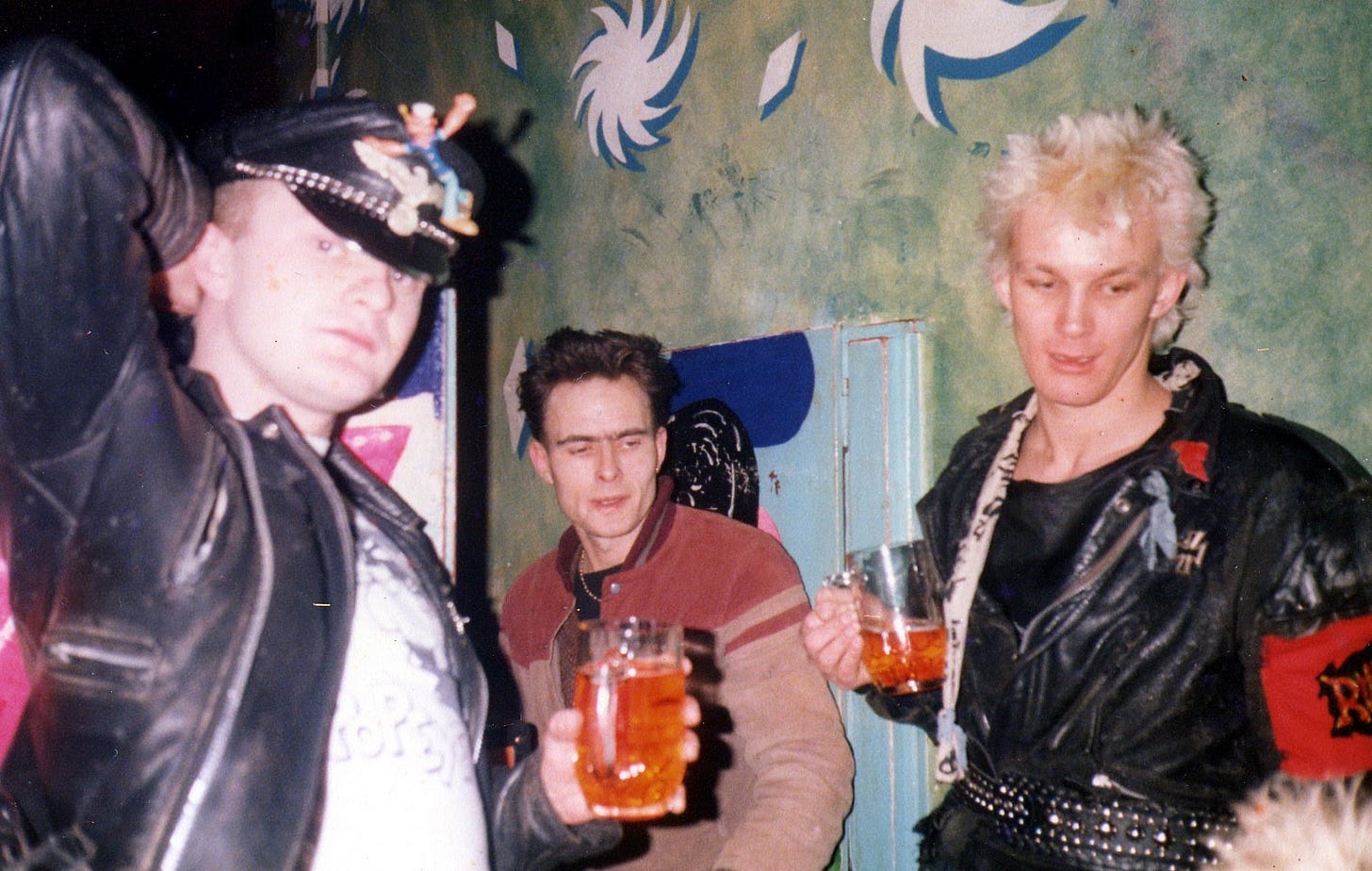
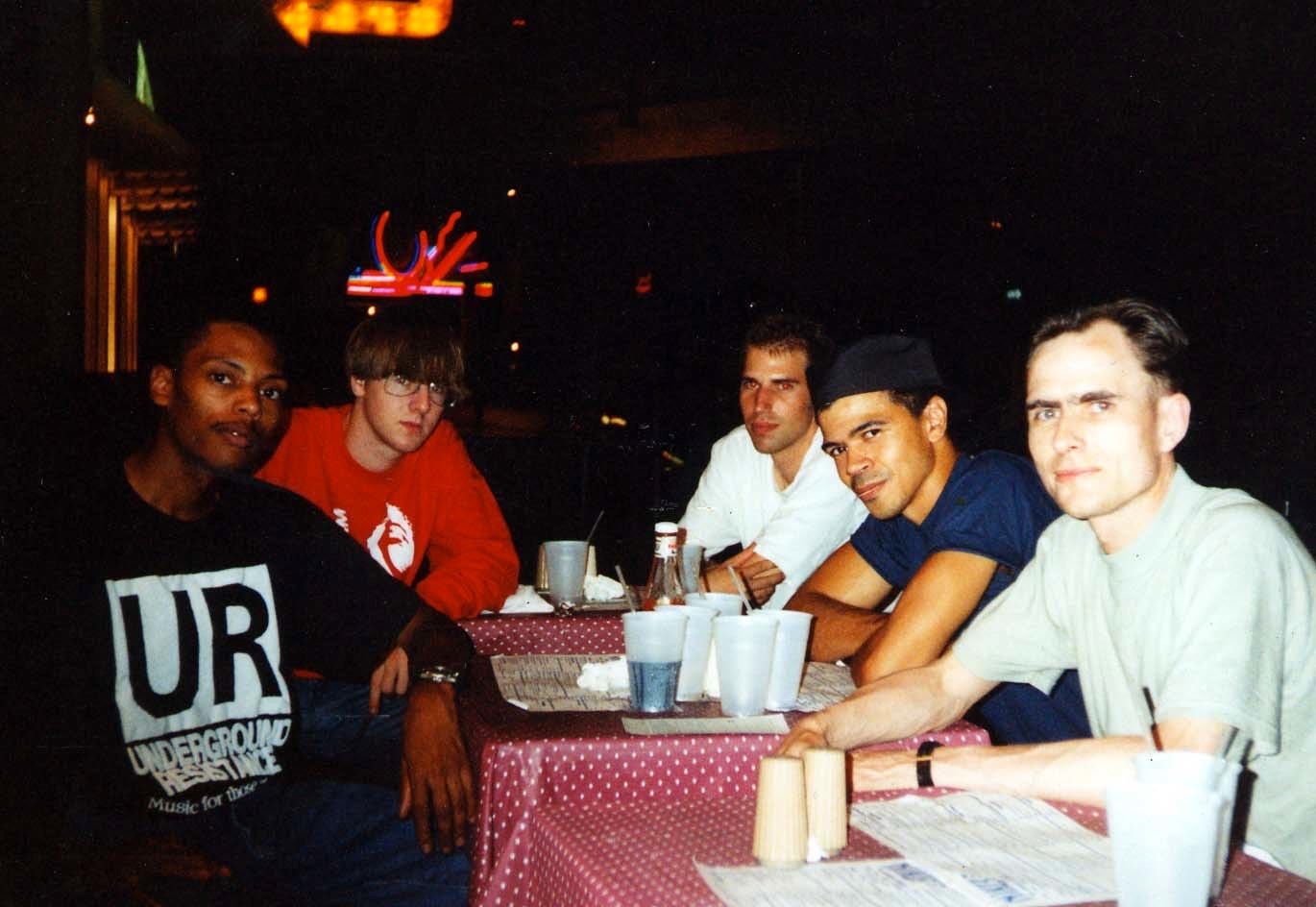
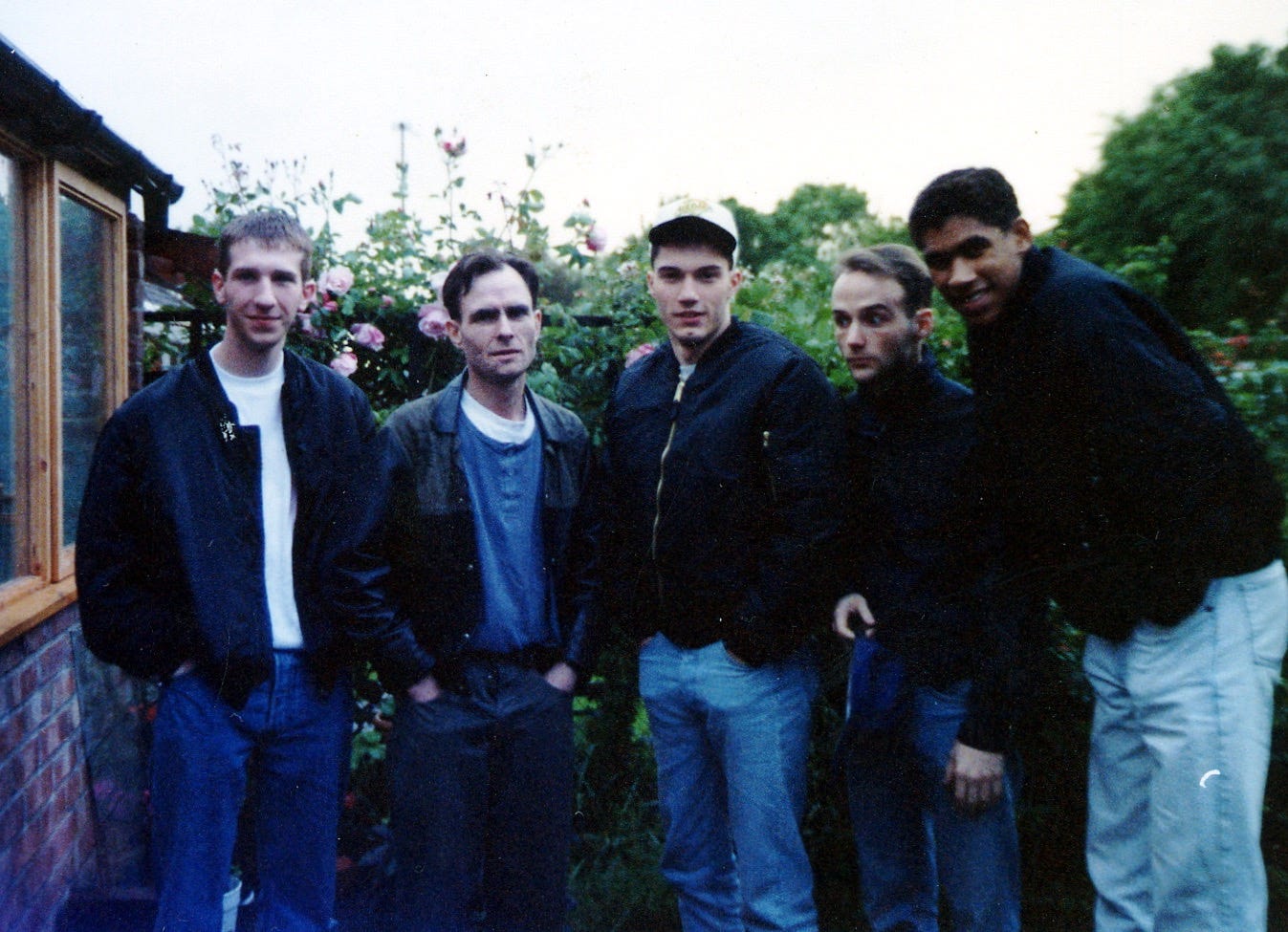
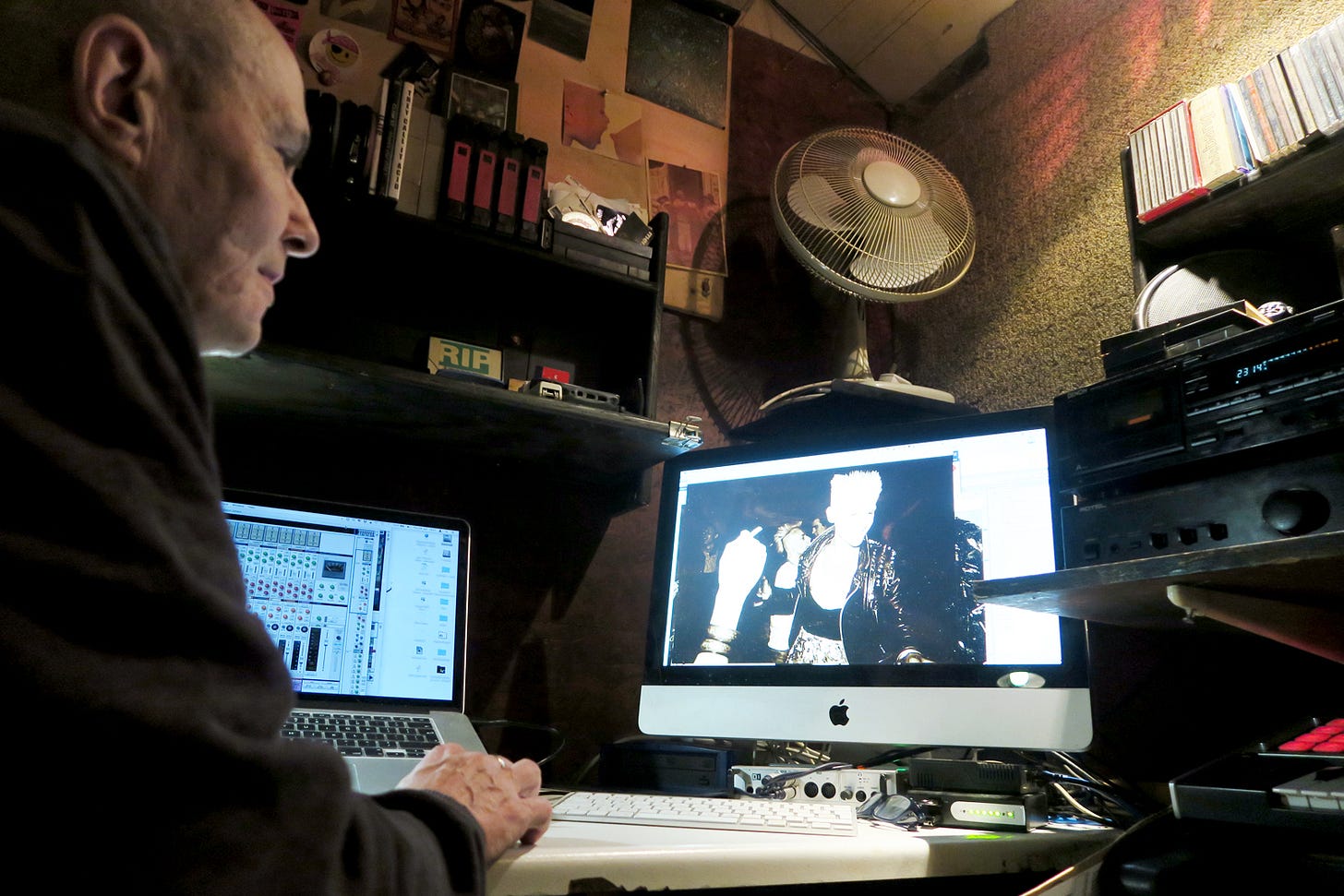
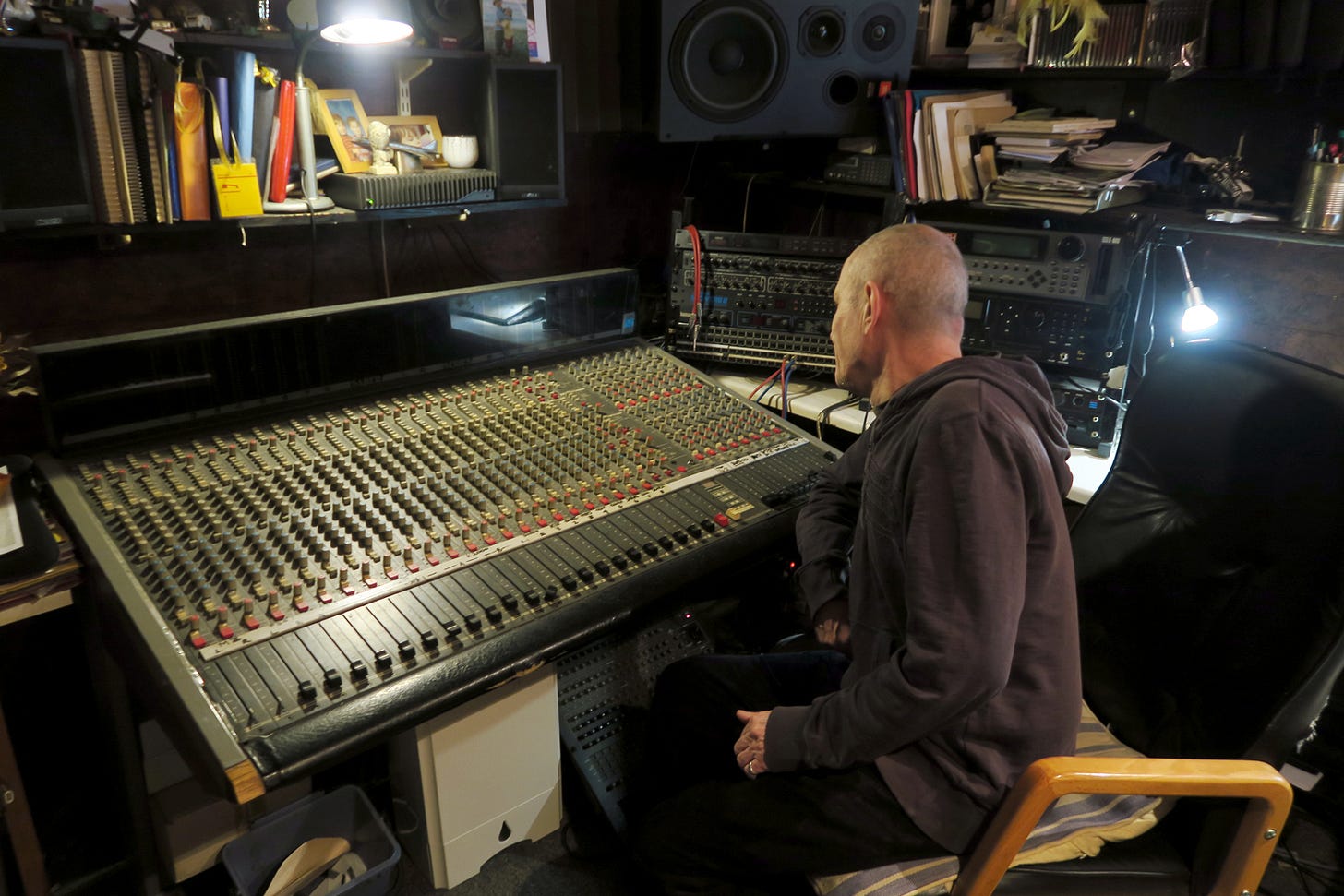
Legend. What a lovely, humble, and thoroughly lovely person he comes across as. Thank you for the music Eddie - keep it coming please!